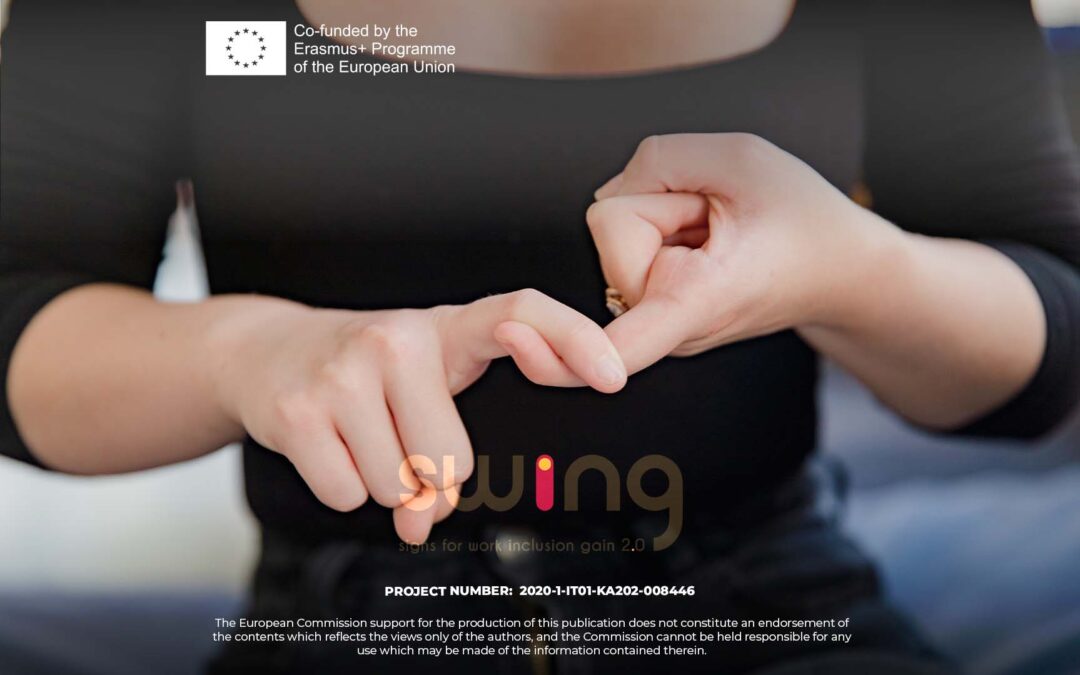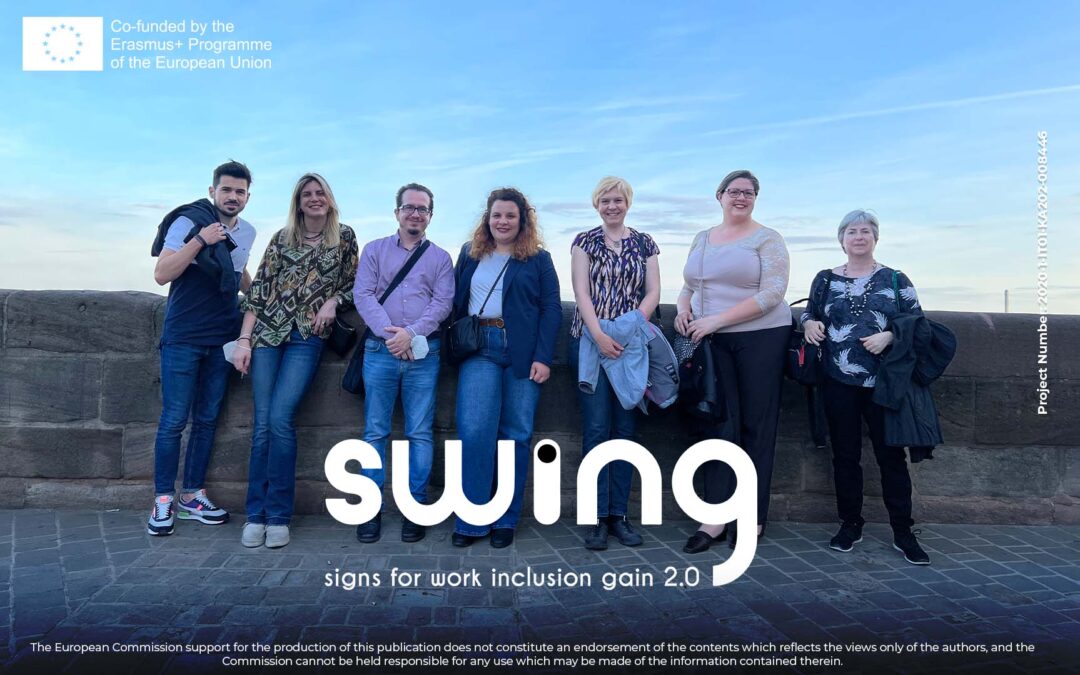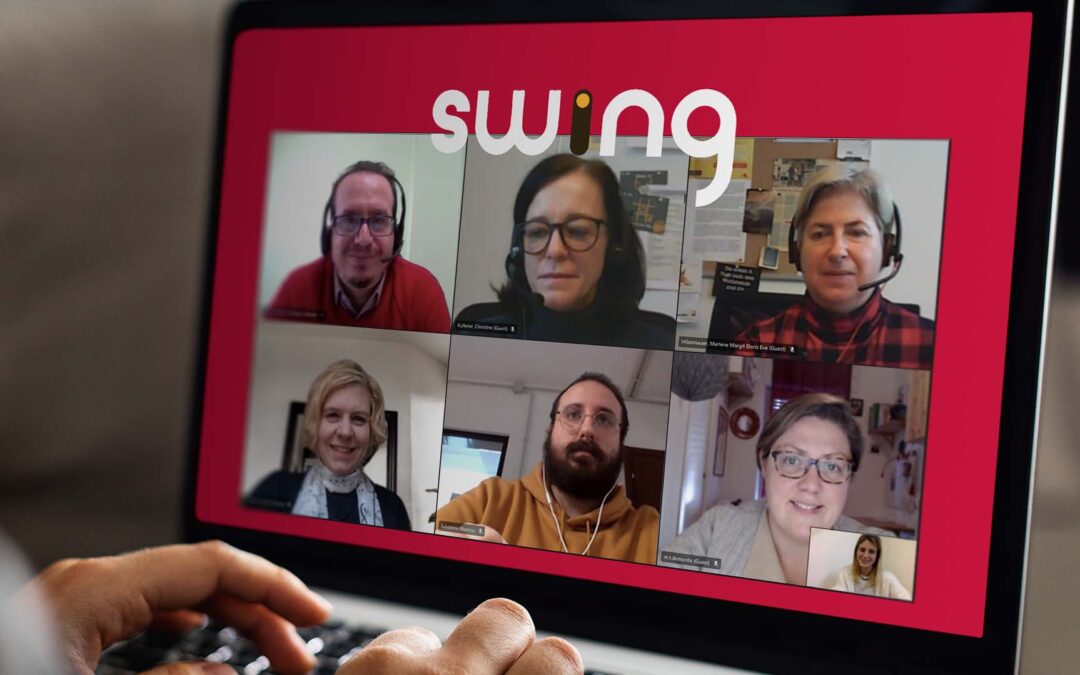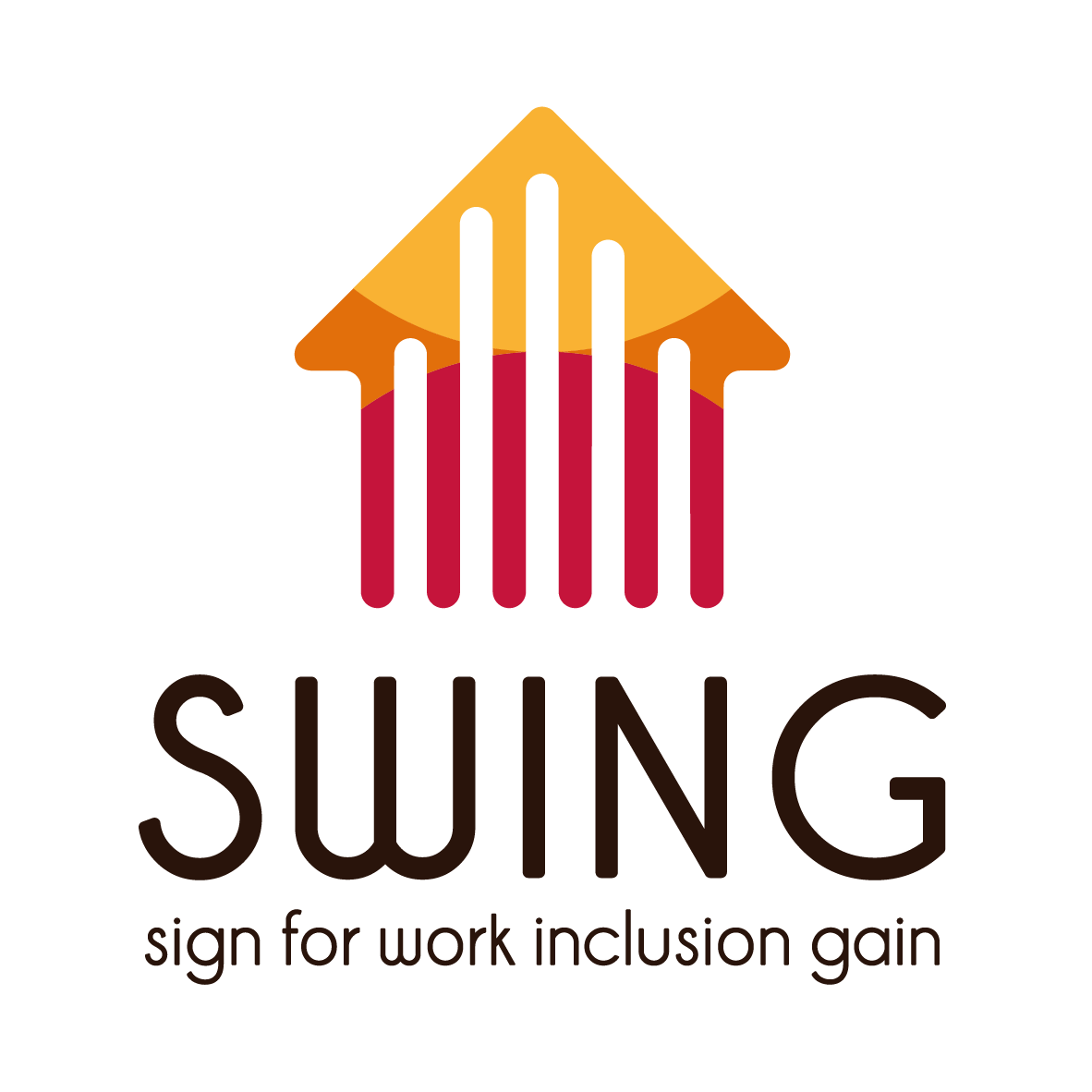
by swingor | Sep 8, 2022 | News 2.0
SWING 2.0 is the direct follow-up to its successful predecessor project SWING. With the help of innovative, self-developed and free digital tools, SWING 2.0 aims to facilitate the acquisition and use of sign language in various service sectors.
A core element of SWING 2.0 is the research in 5 different service sectors – Tour Guides, Health Staff, Civil Servant, Waiters and Sales People – and the investigation of the usual communication situations and communication contents involved.
The Swing 2.0 project consortium is pleased to announce the completion of IO1 “Final reports with most useful words to facilitate the communication with people with hearing problems in different important situations / job positions”. Specifically, the partners of Swing 2.0 have developed 5 different research reports, which summaries the field research cycle carried out and a final document with the 100 selected words in each work sector. The individual research steps – observations in real environment, simulation, interviews, and round table – their results and the conclusions drawn from them are the contents of these five reports.
Please click here to download the five reports.
The aim of the research study is to identify a relevant word list for five different work sectors. This project has resources for the implementation of the most important 100 words for sector and their meanings in multi-lingual sign language videos.
The following took part in the research cycle in the various partner countries: professionals, sign language translators and deaf persons, for whom the development of sign language dictionaries is specifically beneficial.
Above all, the sign language learning materials to be developed in SWING 2.0 are intended to raise awareness for deaf people and their languages, to introduce the sign language vocabulary in different work sectors and, and to stimulate curiosity for a more in-depth engagement with sign language in the context of sign language courses.
In addition to these advantages at the level of the learners, all results and strategies can be picked up, used and shared free of charge by all interested groups of people and organisations.
With this in mind, we are pleased to provide you with these five-report information about our first research steps in the SWING 2.0 project.
Learn more about the project Swing 2.0 Facebook , LinkedIn and Twitter pages!

by swingor | May 24, 2022 | News 2.0
The third Transnational Meeting of Swing 2.0 Project was held on 17-18 May 2022 in Fürth – Nuremberg.
This meeting, hosted by ILI-FAU, allowed the consortium to meet for the first time in presence.
The main aim of SWING 2.0 is facilitate, with innovative and free tools, the acquisition of basic sign language in different work environments where its use could enhance the integration of deaf community at different levels.
Currently the consortium is about to finish IO1 “Final reports with most useful words to facilitate the communication with people with hearing problems in different important situations / job positions” and has just started developing IO2 “Video – dictionaries and other features of selected words in 5 sign languages and 4 spoken languages ”.
During the two days of meeting, the Partners of the Swing 2.0 project discussed the development of 5 reports and 100 selected words. For each sector – tour guides, health staff, civil servant and salespeople – the words that will make up the video dictionary in five sign languages have been finally identified.
This great result was achieved through a complex field research process – carried out in Italy, Spain, Germany and Austria – which included: observations in the real environment; interviews with different target groups; round tables and simulations. All these activities were actively attended by sign language interpreters, deaf or hearing-impaired people and professionals from several sectors.
Now the Consortium is finally ready to start recording in different sign languages 5000 videos, these contents will make up the SWING 2.0 dictionaries and the learning system surrounding them.
This Transnational Project Meeting was an important occasion of sharing and discussion that strengthened the already solid cooperation between the partners.
Learn more about the project Swing 2.0 Facebook , LinkedIn and Twitter pages!

by webeditorceipes | Jan 13, 2022 | News 2.0
The 2nd Transnational Meeting of Swing 2.0 Project was held on 12 January 2022.
The meeting took place online, in compliance with the Covid-19 regulations.
The main aim of SWING 2.0 is following the steps of the successful SWING project and facilitate, with innovative and free tools, the acquisition of basic sign language in different work environments where its use could enhance the integration of deaf community. During the meeting all partners had the possibility to briefly present the results of the first steps in relation to IO1 “Final reports with most useful words to facilitate the communication with people with hearing problems in different important situations/job positions”.
The consortium is currently carrying out several interviews with translators, professionals and hearing-impaired people. In order to promote the success of the SWING 2.0 project, it is an essential goal of the project team to use the expertise, knowledge and interests of personnel from the job positions of Civil Servants, Health Staff, Waiters, Salespeople and Tour Guides. Interviews are conducted to ensure that the materials to be developed (i.e., the sign language video dictionaries and the learning system surrounding them) are relevant and useful for being used in those job positions.
It was a very important occasion of sharing and discussion that strengthened the already solid cooperation between the partners.
Do not miss any update about the project on Swing 2.0 Facebook, LinkedIn and Twitter pages.



